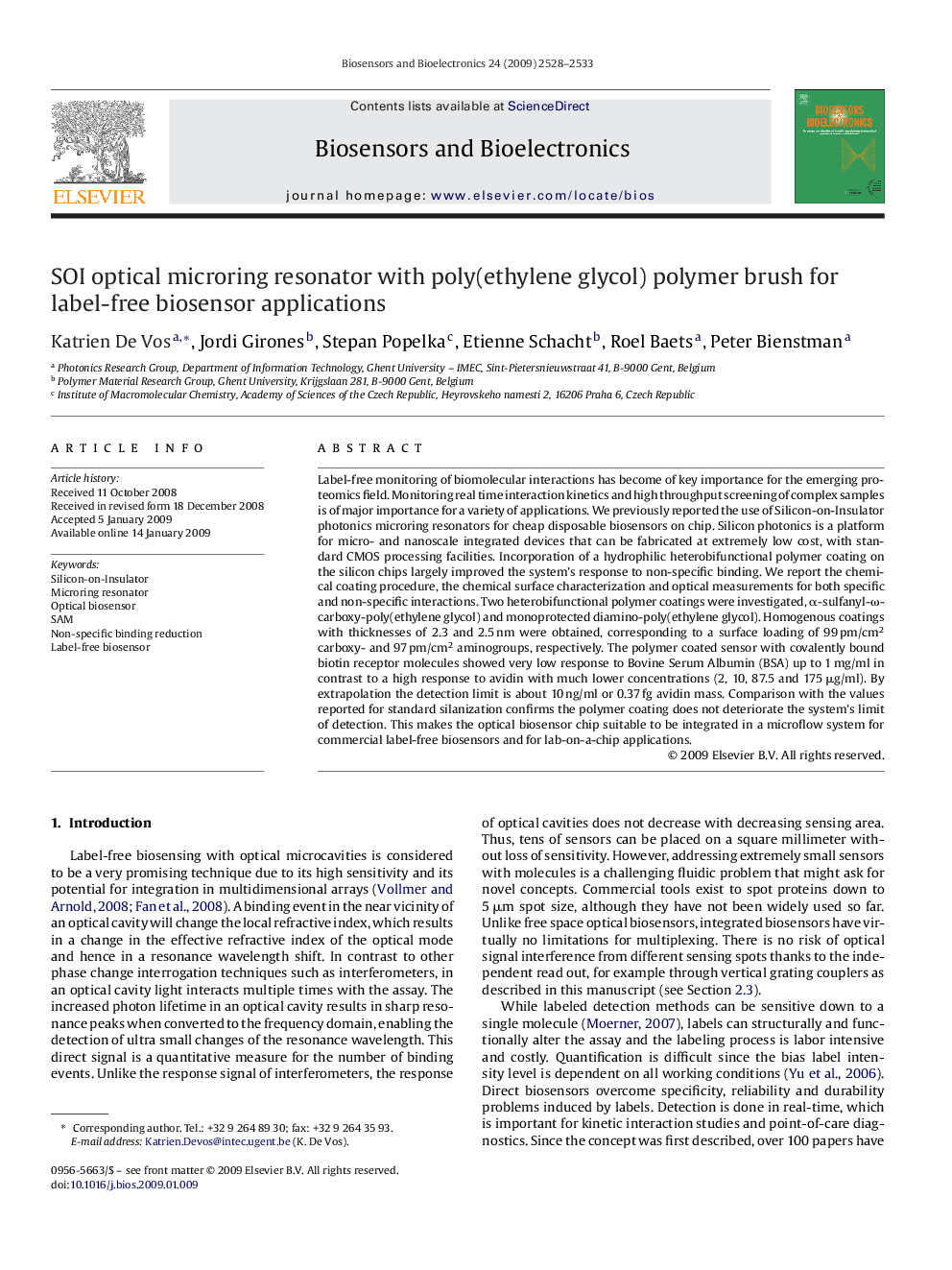| Article ID | Journal | Published Year | Pages | File Type |
|---|---|---|---|---|
| 868706 | Biosensors and Bioelectronics | 2009 | 6 Pages |
Label-free monitoring of biomolecular interactions has become of key importance for the emerging proteomics field. Monitoring real time interaction kinetics and high throughput screening of complex samples is of major importance for a variety of applications. We previously reported the use of Silicon-on-Insulator photonics microring resonators for cheap disposable biosensors on chip. Silicon photonics is a platform for micro- and nanoscale integrated devices that can be fabricated at extremely low cost, with standard CMOS processing facilities. Incorporation of a hydrophilic heterobifunctional polymer coating on the silicon chips largely improved the system's response to non-specific binding. We report the chemical coating procedure, the chemical surface characterization and optical measurements for both specific and non-specific interactions. Two heterobifunctional polymer coatings were investigated, α-sulfanyl-ω-carboxy-poly(ethylene glycol) and monoprotected diamino-poly(ethylene glycol). Homogenous coatings with thicknesses of 2.3 and 2.5 nm were obtained, corresponding to a surface loading of 99 pm/cm2 carboxy- and 97 pm/cm2 aminogroups, respectively. The polymer coated sensor with covalently bound biotin receptor molecules showed very low response to Bovine Serum Albumin (BSA) up to 1 mg/ml in contrast to a high response to avidin with much lower concentrations (2, 10, 87.5 and 175 μg/ml). By extrapolation the detection limit is about 10 ng/ml or 0.37 fg avidin mass. Comparison with the values reported for standard silanization confirms the polymer coating does not deteriorate the system's limit of detection. This makes the optical biosensor chip suitable to be integrated in a microflow system for commercial label-free biosensors and for lab-on-a-chip applications.
